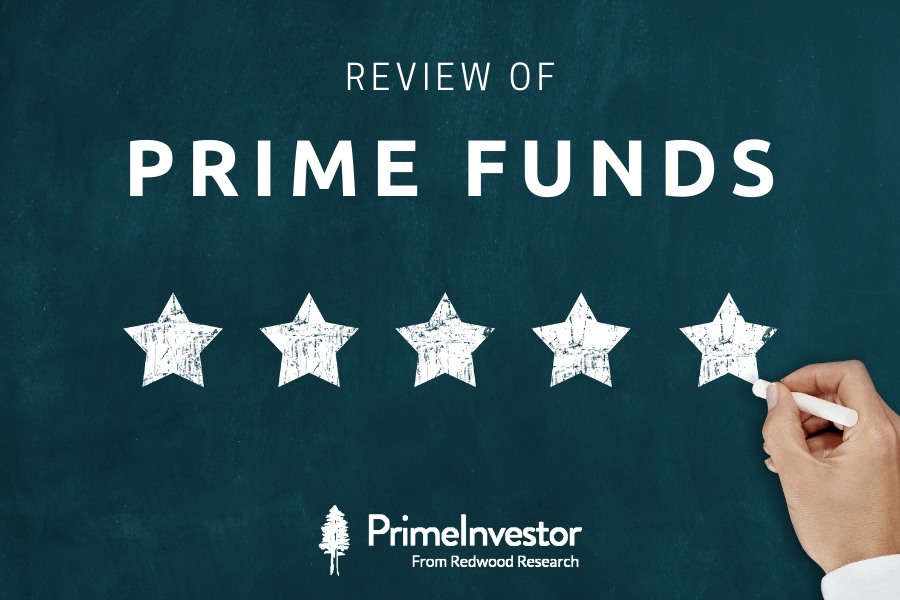Prime Funds is our list of recommended mutual funds across equity, debt, and hybrid categories. We use Prime Ratings, our fund ratings, as a first filter and then use qualitative analysis to design our fund recommendations. Prime Funds is an enduring list of funds that you can use, and you will find a fund that meets any goal you’re looking to meet. Before moving to this quarter’s changes in our Prime Funds review, please note the following points about Prime Funds:
- Different categories: Prime Funds is separated into buckets, based on risk level in equity & hybrid funds, and timeframe in debt funds. Each of these draws from different SEBI-defined categories. We do not go only by Prime Ratings, but look at other factors as well. Our reasoning for this is explained here.
- Different styles: In Prime Funds, we’ve aimed at providing funds that follow different strategies in order for you to mix styles and diversify your portfolio with ease. The ‘Why this fund’ for each Prime Fund will brief its strategy, why we picked it, and how to use it in your portfolio.
- Direct plans: We have specifically given the direct plans in Prime Funds. We have observed that even in top-quality funds, the regular plan’s expense ratio can be significantly higher than the direct plan. In such cases, the direct would be the better option to go for. Check our MF Review Tool (and not just our ratings page) to know if you can go for the regular plan as well. Our reasoning is explained here.
- Review: Our aim in reviewing the Prime Funds list every quarter is to ensure that we don’t miss any good opportunities that are coming up and we are not holding on to funds that are slipping. When we remove funds from the Prime Funds list, we tell you exactly what to do if you have invested in these funds. Funds we remove do not immediately call for a sell – it is just that they have slipped in performance marginally or there are better alternatives now. Unless our review tool says such funds are a ‘sell’, you can hold them (refer to our article on when to sell funds.)
- Using Prime Funds: You do not need to hold every Prime Fund nor add any new fund we introduce to the list. Unless it fits your overall portfolio/strategy, or there is something lacking, there is little need for you to go on adding funds. Our idea of covering them in details through some of our weekly calls is to let you know the strategy, style and suitability in different portfolios. It is not a specific call to buy right away, unless we mention it is.

With that said, here are the changes we have made in this review cycle.
Equity funds
Stock markets have rallied since our last review, despite day-to-day blips. While the December 2020 quarter results showed strong growth, much depends now on how the coming quarters pan out and the impact of mini-lockdowns and continuing effect of the pandemic. Therefore, further volatility cannot be ruled out, and we continue to take a relatively cautious stance in adding funds.
Given that markets were in a tailspin this time last year, recent fund returns look phenomenal. It’s best not be too enamoured with these numbers as the base effect will wear off. This apart, several funds that were severe laggards in the years before this – especially those that followed a value-based strategy – have used this rally to regain lost returns. These funds, as a result, have climbed to the top of the charts pushing out the former toppers.
However, we would still like to see some sustained improvement before changing our stance on them. Our changes to equity funds this quarter are as follows.
Equity – Aggressive
In this category, we have added UTI Flexi Cap (UTI Equity, before it shifted over to the flexi-cap category). This fund adopts a bottom-up, quality-based approach. It can deviate from the broad-market Nifty 500 index and can take heavy sector exposures.
This fund was previously an underperformer before it saw both a strategy and a manager change. Its consistency has picked up steadily and the fund now beats the Nifty 500 88% of the time over the past 4-year period, similar to funds such as Axis Flexi Cap and Kotak Equity Contra. Unlike many other growth-based funds, this fund has not lost much ground against the index in the recent value-fuelled rally. Its risk-adjusted returns hold well above the category.
The fund invests across market capitalisations; while large-caps are the portfolio majority, mid-and-small caps can go up to a third of the portfolio. It is also more volatile than other multi-cap style funds. These factors, along with its strategy, are the reason we’ve included this in the aggressive category in Prime Funds.
We have removed Invesco India Growth Opportunities in this review. We had made a mention of its underperformance in our earlier review. These reasons continue to hold – which is that certain top stock picks, and a lower mid-cap allocation, dragged returns. For instance, top portfolio weights remain financials, which have seen uneven market performance. The fund has made portfolio changes to pick up market opportunities. However, the margin of underperformance against the Nifty LargeMid 250 is yet to improve.
If you have SIPs in the fund, stop and restart in other funds. Choose from other funds in the Aggressive Prime Funds set, or use more aggressive index funds such as the Nifty Next 50 or the Nifty 500. Hold investments made so far in order to capture a turnaround in the fund’s performance; the fund’s longer-term record and strategy both remain above average.
For those investing in this fund as part of your Prime Portfolio, we’ll separately let you know what action to take. You will receive an alert to check your dashboard for the same.
Given that markets were in a tailspin this time last year, recent fund returns look phenomenal. It’s best not be too enamoured with these numbers as the base effect will wear off.
Strategy/thematic
Here, we have added ICICI Pru Commodities. With commodity prices on the rise globally, stocks in this space have seen an improvement in realisations. This apart, a longer commodity cycle is likely to play out in steel, driven by China’s emission control norms. This can prove a positive for Indian steel companies. Other commodity plays across metals and oil and gas too are seeing heightened prospects.
ICICI Pru Commodities invests across the spectrum – oil & gas, chemicals, metals, cement, and more. It takes concentrated exposures to sectors where there is promise and can quickly switch over from one to the other. In commodities, its important to spot and latch on to an uptrend quickly. In this ability, our view is that ICICI Pru Commodities is nimbler than SBI Magnum Comma, the other commodity play. As always, thematic investing carries higher risks. The theme does not also lend itself to long SIPs, so it’s best to invest in a few lump-sums in the next 6 months at most. Don’t go over 5-10% in allocations and remember to book profit from time to time in such cyclical themes.
Hybrid funds
We have not made any changes to our recommendations in hybrid funds. We’d however like to note the performance of ICICI Prudential Balanced Advantage, which features in the Hybrid Equity – Moderate Risk category in Prime Funds.
This fund had lagged peers, as we pointed out before, because it took on higher risks in unhedged equity than peers and suffered in containing volatility and downsides. In the past few months, though, the fund has improved performance and has begun beating category average. Its volatility has lowered, and given the market uncertainty, it has increased the hedged component of the portfolio more than peers have.
Debt funds
The debt market continues to field uncertainty over where rates are headed; while indications are that rates are likely to move higher, the Reserve Bank appears to be working to keep rates in check. This tug-of-war certainly does not lend itself to risk-taking in duration. Therefore, we prefer to remain cautious in adding duration-based funds at this time.
Debt – 3 months to 1.5 years
In this category, we have added a money market fund – Aditya Birla Sun Life Money Manager fund. This is a fund with high credit quality and low volatility. It invests in commercial papers, certificate of deposits and other money market instruments. The fund’s average maturity is less than 1 year.
The fund is able to beat peers reasonably steadily; its average 1-year returns over the past 4 years at 7.8% is above the 7.3% that other very short-maturity funds delivered – and do note that peers include those that take credit risk. Apart from high portfolio quality and low volatility, we also chose this fund because any uptick in market interest rates will reflect quickly in CPs and CDs.
Debt – 1.5 to 3 years
We added Nippon India Floating Rate fund here. Floating rate funds use floating-rate bonds and interest derivatives in their portfolios, making them well-placed to reflect any changes in the interest rate cycle.
Nippon India Floating Rate sticks to high-quality papers. It does not take concentrated exposure to papers outside of PSUs. The fund beats other very short-maturity funds steadily, and has better portfolio yields. However, it can be more volatile on a weekly or even monthly basis as it holds gilt instruments; this is par for the course and you should be willing to let such volatility pass.
For those who do not wish to take any credit risk, Nippon Floating Rate is an alternative to our other recommended floating rate fund – HDFC Floating Rate – which takes some amount of credit calls. Both funds, however, have similar portfolio maturities of around 2 years. You will thus need a minimum 2-year period if you wish to invest in the fund.
Debt – Above 5 years
We’ve fielded a lot of questions from you on our recommendation in SBI Magnum Constant Maturity as its performance saw dips. The fund continues to be part of our recommended list. In debt, we have always said that your timeframe needs to be the key consideration, which the reason for the manner in which we bucket Prime Funds. We have answered questions you may have on SBI Constant Maturity and other debt-fund related questions here.





25 thoughts on “Quarterly review – changes in Prime Funds, our mutual fund recommendations”
Hi Vidya,
My query is regarding ICICI Pru Commodities Fund. It has already had a run of ~ 20% since above article. What would be your advice on the same with all the chatter on metal space being in bubble? Is it still worth holding it?
Please continue to hold; metals are in a more structural upswing at this time and could continue to move for a while. In future, request you to please send queries related to our recommendations to [email protected], as we prefer this route to track questions and responses. – thanks, Bhavana
Hello Team PrimeInvestor,
In your recommended list you have added ICICI PRUDENTIAL COMM fund wherein the standard deviation of the fund is about 42. Does it mean the fund is highly volatile though the sharpe ratio is good.
Hello Sir, yes you are right. As a commodity fund, a super cycle is underway and the return deviation from average (volatility can be deviation on upside too) is quite high. Of course, when the cycle falls, it can be volatile equally on downside as well 🙂 Vidya
Comments are closed.